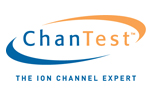08:00 | Registration |
|
Session: Channelopathies |
| |
09:30 | Resurgent Current in Neuronal and Muscle Channelopathies
Theodore Cummins, Associate Professor, University of Indiana, United States of America
Resurgent currents are unusual voltage-gated sodium currents that can greatly alter excitability. Our data indicate resurgent currents can play important roles in inherited and acquired channelopathies. |
10:00 | Dravet Syndrome Patient-Specific iPSCs Reveal Potential Epilepsy Mechanisms Via Compensatory Ion Channel Alterations
Lori Isom, Associate Professor, University of Michigan, United States of America
We present the first report of the use of human induced pluripotent stem cell (iPSC) neurons to investigate the mechanism of epilepsy linked to sodium channel mutations. |
10:30 | Coffee & Networking in Main Exhibition Hall |
|
Session: Advances in Ion Channel Technologies |
| |
11:15 | Characterization of a Druggable Binding Site in the Putative Diuretic Target Kir1.1
Jerod Denton, Assistant Professor, Vanderbilt University, United States of America
The inward rectifier potassium channel Kir1.1 may be a drug target for a novel class of diuretic. This talk will review our ongoing efforts to develop small-molecule probes for assessing its therapeutic potential. |
11:45 | Targeted Integration of Genes for Cell Based Assays
Eric Merle, Director, Cellectis Bioresearch Inc, United States of America
Use of Cellectis bioresearch cellular Genome Positioning System (cGPS®), based on meganuclease-driven targeted integration of transgene, permits the generation of stable and isogenic cell lines for HTS cell based assays development. |
12:15 |  Technology Spotlight: Technology Spotlight:
IonFlux – Automated Patch Clamp Redefined
Steve Smith, Technical Director, Fluxion Biosciences
IonFlux, a next generation automated patch clamp instrument, features continuous compound perfusion, unmatched protocol flexibility, and a modular benchtop architecture. We will describe how the IonFlux platform is changing the status quo for ion channel assays. This talk will focus on ligand gated assays, where customers have been able to increase throughput by an order of magnitude as compared to other leading platforms. Other unique features of the system will be discussed: temperature dependent pharmacology and recovery from inactivation studies.
|
12:30 | Lunch & Networking in Main Exhibition Hall |
13:15 | Poster Presentations |
14:15 | NMR as a Tool for Examining Mechanisms of Transport and Inhibition in CLC “Chloride Channels”
Shelley Elvington, Senior Post Doc, Stanford University, United States of America
A detailed mechanistic understanding of ion transport via CLC “chloride channels” would facilitate development of therapeutics to treat CLC-mediated disorders. Towards this goal, I have developed NMR-based systems to assess how binding of various ligands influence CLC conformational change. |
14:45 | Protons, Heat and Mechanical Force Converge to Gate Two-Pore Potassium Channels at the Selectivity Filter
Slav Bagriantsev, Senior Post Doc, University of California San Francisco, United States of America
Our studies demonstrate the power of combining genetic screening with electrophysiology to uncover the gating mechanism of polymodal mammalian two-pore (K2P) potassium channels. |
15:15 |  Technology Spotlight: Technology Spotlight:
Avoiding the bottleneck with QPatch Automation
Ali Yehia, Sales Director, Sophion Bioscience Inc
Electrophysiological ion channel research is becoming competitive with classical high throughput means of discovery. Machine operation and data analysis have become the new bottlenecks. The QPatch HTX, one of the highly successful automated patch clamp systems, employs state of the art automation all through, from data acquisition to data analysis, speeding the time it takes from cell to IC50. The QPatch’s highly sophisticated analysis software starts analyzing data, based on pre-set conditions, and compiles results in a report format that can be automatically emailed to the user. This automation can be further deployed in filtering and re-organizing applied assays to complete or replace any previously failed data points. As a result, a properly setup assay and analysis scheme can dramatically decrease one of the final bottlenecks in early ion channel research and raise automated patch clamp throughput to new levels.
|
15:30 | Coffee & Networking in Main Exhibition Hall |
|
Session: Potassium Channels |
| |
16:15 | What is New About hERG Channel Inhibition: Atypical hERG Blockers and Mitigation Strategies?
Gul Erdemli, Head, Novartis Institutes for Biomedical Research, United States of America
This talk will describe different classes of low molecular weight compounds that may block the hERG channel by binding to a novel site and disuss structure activity relationship and potential mitigtaion strategies. |
16:45 | A Re-Interpretation of hERG Activation; Insight from Gating Current Measurements and Voltage Clamp Fluorimetry.
David Fedida, Associate Head, University of British Columbia, Canada
Direct measurements of hERG channel gating currents and fluorimetry studies of specifically-labeled residues, allow the relationships between channel voltage sensor domains and pore opening events to be closely examined and re-interpreted. We show that voltage activation of hERG channels is much more rapid than previously supposed and that slow hERG ionic current activation is related to delayed coupling between sensor movements and pore opening. |
17:15 | G Protein Estrogen Receptor (GPR30) Regulates hERG (Kv11.1) Channel Activity
Saverio Gentile, Assistant Professor, Loyola University Medical Center, United States of America
Research in cancer biology has revealed that the hERG1 gene encoding Kv11.1 potassium ion channel is robustly expressed in breast cancers but not in adjacent non-neoplastic tissue. Blocking Kv11.1 current inhibits proliferation of human cancer cells, suggesting that this channel plays a significant role in the biology of cancerous tissue. Breast cancer cells that do not express estrogen receptors (ERneg) manifest an estrogen-dependent aggressive course of disease and have high rates of metastasis compared to other histological types. Although treatments that target the ER have recently proven very promising ERneg cancers do not respond to ER-targeted therapies, as they lack canonical a/b-estrogen receptors. Interestingly, recent studies have demonstrated that estrogen effects on proliferation of ERneg breast cancer cells can be mediated by the novel membrane bound estrogen receptor, GPER (GPR30). However, very little is known about the biochemical signaling cascade activated by estrogen via GPER. Here we show that: Kv11.1 ion channel activity is modulated by an estrogen-activated signaling cascade via the newly characterized membrane bound estrogen receptor GPER in ERneg breast cancer cells. |
17:45 | Drinks Reception |




